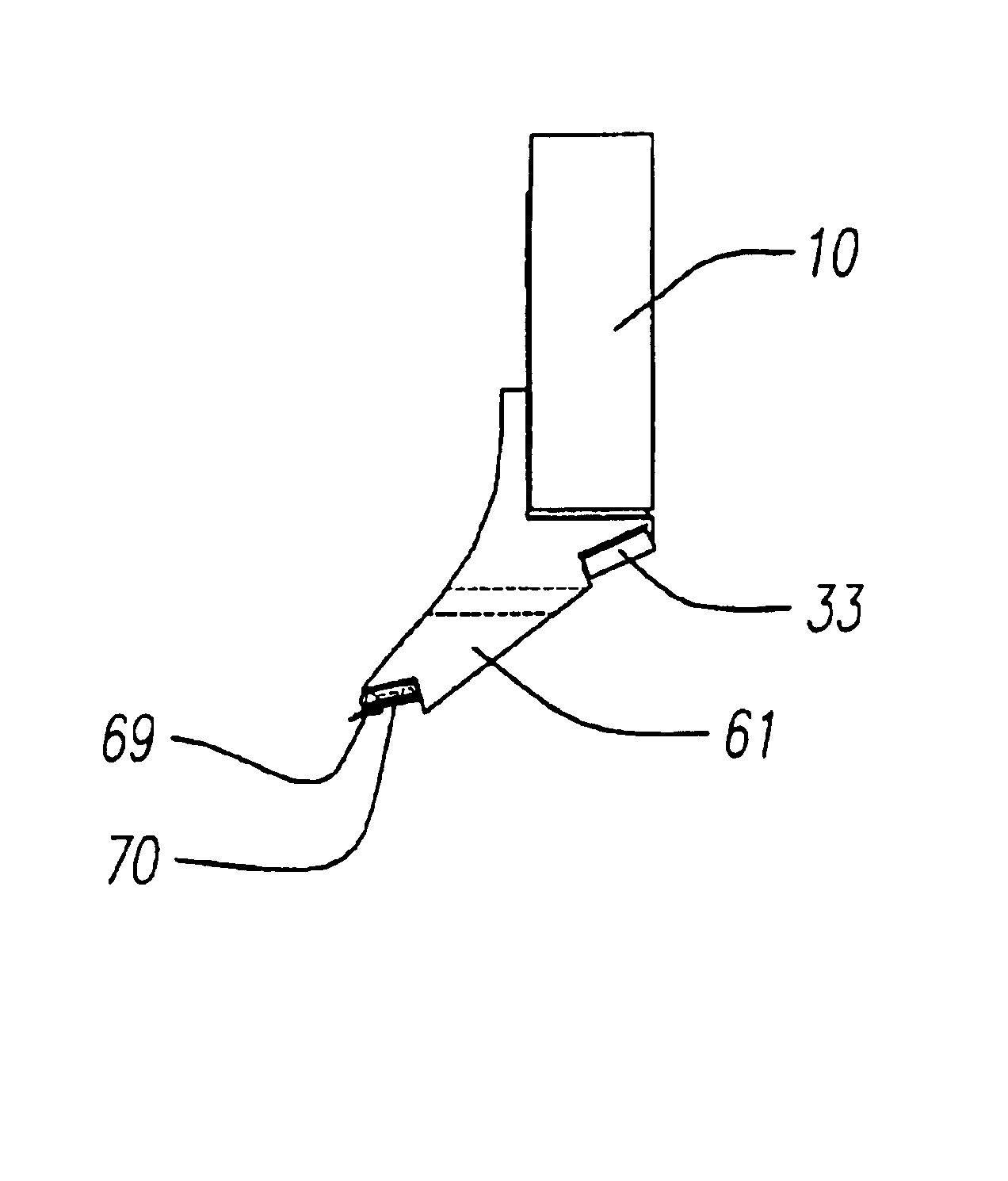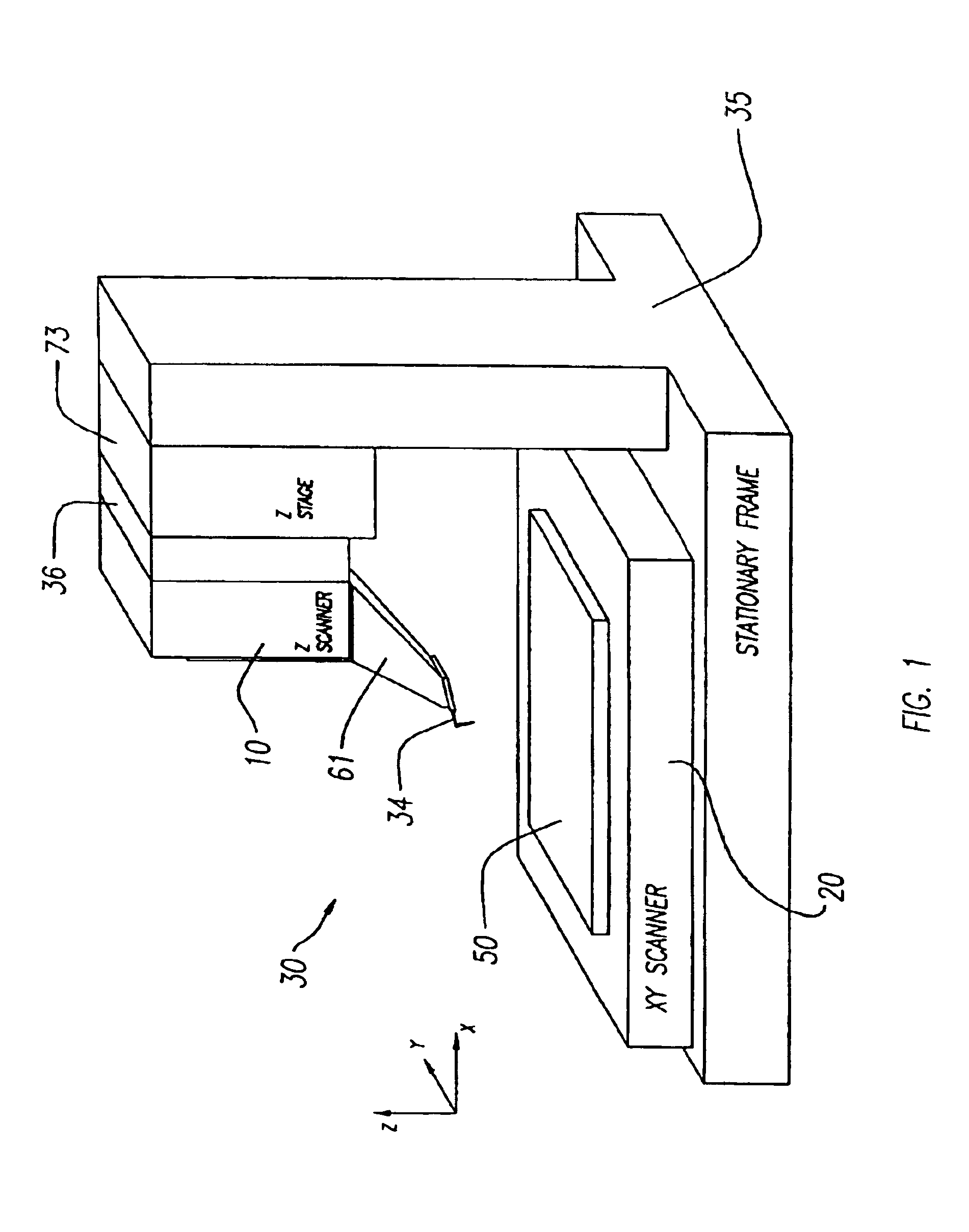Scanning probe microscope with improved probe tip mount
- Summary
- Abstract
- Description
- Claims
- Application Information
AI Technical Summary
Benefits of technology
Problems solved by technology
Method used
Image
Examples
Embodiment Construction
[0026]A scanning probe microscope 30 in accordance with the invention physically separates a z scanner 10 from an x-y scanner 20, as shown in FIG. 1. Scanners 10 and 20 are mounted on a common frame 35 that is stationary, although in an alternative embodiment, they may be mounted on different frames. There is also a z-stage 73 between scanner 10 and scanner 20. The z-stage 73 is a one dimensional translation stage with a stepper motor and is used to bring a probe tip (mounted on a cantilever that in turn is mounted on a z scanner) close enough to a sample on a sample chuck 50 so that the sample surface can be reached within z scanner range. Regardless of how they are mounted, the two scanners 10 and 20 are physically detached from one another (i.e. are not mechanically coupled, except that both are coupled to a stationary frame 35 and each provides motion relative to the frame independent of the other).
[0027]Such physical separation of x-y scanner 20 from z scanner 10, in a scanning...
PUM
 Login to view more
Login to view more Abstract
Description
Claims
Application Information
 Login to view more
Login to view more - R&D Engineer
- R&D Manager
- IP Professional
- Industry Leading Data Capabilities
- Powerful AI technology
- Patent DNA Extraction
Browse by: Latest US Patents, China's latest patents, Technical Efficacy Thesaurus, Application Domain, Technology Topic.
© 2024 PatSnap. All rights reserved.Legal|Privacy policy|Modern Slavery Act Transparency Statement|Sitemap



